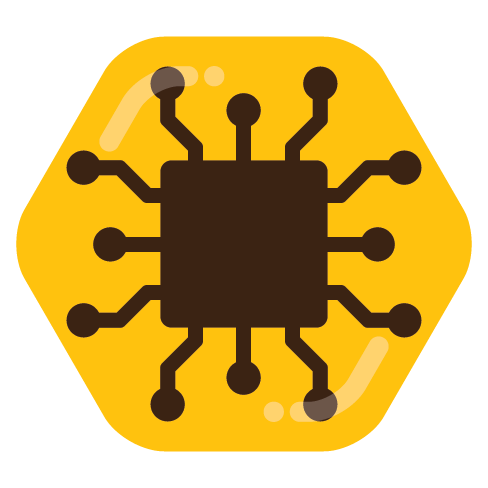

Do you know the etymology of these words? My understanding is that they aren’t exactly “Yes” but more “As you say” or something similar. But I am no arabicist.


Do you know the etymology of these words? My understanding is that they aren’t exactly “Yes” but more “As you say” or something similar. But I am no arabicist.


Arabic doesn’t have a word for “yes”. I don’t think most semitic languages do either [Classical Hebrew does not, but Modern Hebrew does, however, the word they use in modern Hebrew is the word for “Thusly”, that is now a particle]. In fact you can see that proto-indo European didn’t have a word for yes: Greek is ναι, but the romance languages are si (I am pretty sure French oui is actually derived from the same root as Spanish and Italian. Could be wrong) and if my memories is correct (and it may not be) classical Latin didn’t have a word for yes. And the Germanic words yes/ja have a similar origin. I can’t speak to the other IE languages unfortunately.
I know there are also language families that don’t have a single word for no, but use a negation mood on the verb. I unfortunately can’t give you an example of this. But it should be fun to look up!


It’s no longer parody. It’s prophecy


I don’t know any hieroglyphs, but I do know cuneiform. Would rather read cuneiform than regex!


This is the one I use! Might have to look at regexer though


I wouldn’t complain about using VSCode if the team i was on primarily used it (a la Typescript). But yeah, I’m glad I am more independent… And not doing web dev.


I honestly was persuaded to start using neovim (again) because of theprimegean. I don’t like his content, but I was so tired of VS Code being so fucking slow and not part of the terminal. I used vim a lot, but with too many plugins it slows to a crawl. So when theprimegean talked about neovim, I was like great, yeah, I should try that. And then a few videos later I blocked his chanel because, yeah, it’s not great.


Do you think chrome is too useful? Do you think Google is not creepy enough? Well I’ve got a new browser for you! Introducing OpenAI clippy browser! OpenAI can now legally steal all your data. With chat bots crammed in every corner. Help us boil the ocean!
Yeah, because I know this, and the research it self doesn’t sound interesting to me.


Oh. Good one. Markdown everywhere. Slack always pissed me off for it’s sub par markdown support.


Using an LLM to come up with function names for transpiled code would be a good idea, but other than that. Nope.
Is RDJ really a good casting for Doom? I like RDJ, but, this doesn’t seem like a good role for imhis usual schtick. But I am willing to admit I am wrong.


I’d probably use selenium. But that depends.


Oh gawd. That would be so horrible! Is there a project o compile JavaScript to bytecode? With like LLVM? There must be, but I haven’t heard of it. I shouldn’t even say anything because I will be better off pretending it doesn’t exist.


I totally get why you wouldn’t say Arch is fun. I’m not sure if I actually like arch or if I’m a masochist, however I will say, I learned a lot about the whole OS by installing it, and fixing it when it broke. It made me much more comfortable with using Linux. I haven’t used it in a couple of years, but I am thinking about reinstalling it. Nostalgia is a bad thing :-)


I like the ideas some other people mention. Specifically: read about your specific hardware and the distro of Linux you want to install. Then, make sure you are using as many open source cross platforms apps as you can, so when you do switch, you will be in familiar territory. I do think the criticisms of Ubuntu as a bad first choice are interesting, and maybe true, but I wouldn’t over look downstream distros like Pop!_OS. It’s Ubuntu, but with Flat packs and a distinctive Desktop Environment. Mint might also be a good choice, I know lots of people who like it (I don’t personally, but to each their own).
When I started on Linux, I installed Arch on an old MacBook. In those days apple was using amd64, but they were not friendly with Linux or the rest of the computing world. However it was older hardware, and the Arch Wiki had a great page on how to install Linux for that particular configuration. Arch is not a beginner friendly distro, but the wiki is fantastic, and so well documented.
But my main piece of distinctive advice is just do it. If you have read a few articles and have a pretty good sense of what is required (and are running common, last generation hardware), just jump in. You will probably never “feel” ready, and you will come across unique problems that no starter guide will prepare you for. So just go for it, and learn along the way.


Python is powerful because it easily wraps C libraries that do real work! Just kidding mostly.
But yeah, js isn’t a language I would describe as powerful. Ubiquitous? More capable than you would expect given it’s history? Bloated?


I have had a paper map direct me through a gated community. Thankfully the tools in the truck unfastened the hinges. Still bugs me. It was a county road!


Same. Same. I know some people use their phones, or GPS devices, but when I’m backpacking, I want a paper map and a compass. I bought two a few months back for planning a trips this summer.
I’m still using Airsonic-Advanced. I know there are alternatives like gonic and navidrome. But, eh. I like buy music from Bandcamp or directly from the artist, and then upload it to airsonic. Works nice.